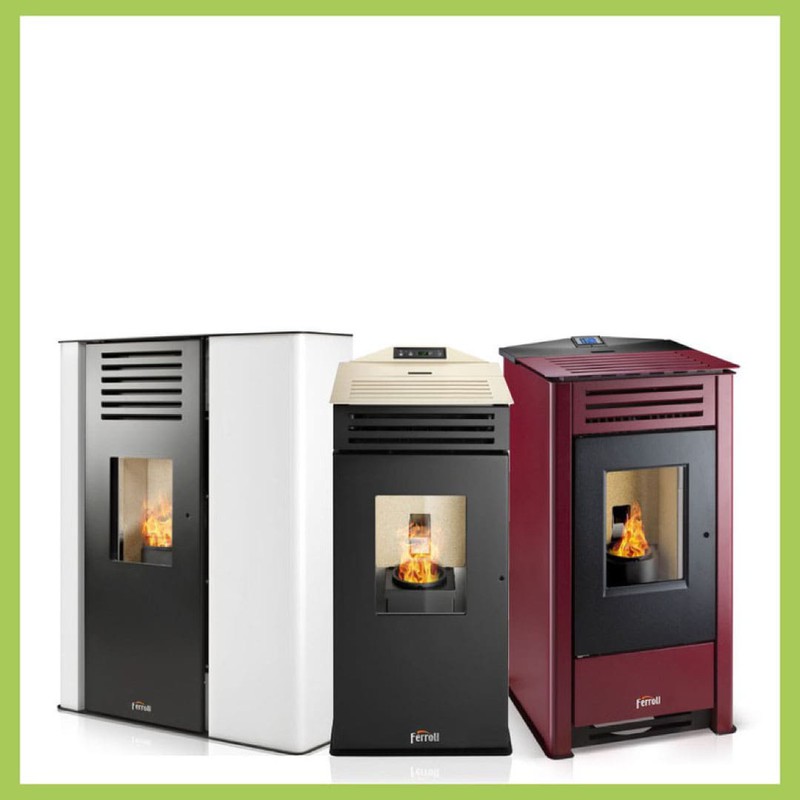Regulation and installation advice for a pellet stove
The pellet stove has brought about a revolution in heating systems, because it is a clean and economical heating medium. They are 100% ecological and renewable stoves. They reduce emissions and take care of the environment. They have a high level of comfort (a single load of pellets can last up to 3 days), they turn on automatically and can be programmed -both the ignition and shutdown of the stove as well as the temperature control.
The pellet is a 100% renewable fuel that is manufactured from plant waste and that releases low CO2 emissions because it respects the CO2 cycle of nature. When a tree dies, it decomposes and releases the CO2 that it has stored during its life. This process is the one that is reproduced when pellets are burned: releasing easily processable CO2 back to the environment, compared to other energies such as gas, diesel, etc.
The use of pellets offers high efficiency. In addition, due to the low price of pellets compared to other fuels, you will notice significant savings in the long run. It is advisable to buy EN A-1 Certified Quality pellets, which are those that guarantee the correct operation of the stove and increase both its performance and the useful life of the appliance.

The combustion gases must be expelled to the outside using a single wall chimney with an 80 mm diameter duct, in the event that they exceed 4 m of pipe they will be lengthened with a reduction to a 100 mm diameter duct. The use of double-walled pipes will be necessary in the following cases: -when part of the pipe goes outside and due to environmental conditions there is a risk of condensation due to the low temperature, and -in installations where the duct is close to flammable materials or sensitive to temperature changes.
To achieve greater security, full warranty coverage by the manufacturer, better operation and performance of the pellet stove, it is advisable to know the following Norms and tips to take into account when installing the smoke outlet pipe.
It will be done in insulated places using single-walled tube.
In flammable or uninsulated places or outdoors, double-walled pipes will be used in order to avoid condensate liquids that could damage the stove motor.
Type of materials: use 316 stainless steel or black vitrified steel tubes, the latter are convenient in homes and have an aesthetic advantage.
Minimum vertical tube: 1.5-2 meters.
Maximum horizontal tube: 2 meters. * It is recommended to install it with a certain inclination
Avoid horizontal sections and curves, especially 90º elbows. Instead of 90º elbows, it is convenient to use two 45º elbows.
It is mandatory to use the registration tee as close as possible to the stove outlet, trying to place a soot plug on said tee. In cold areas, also place the soot collector with a drain to drain the condensate liquid.
In the final part of the duct outlet, a reflector or a cap must be installed, it is worthwhile that the cap be windproof and rainproof.
A minimum of maintenance is recommended: in order to ensure the durability of this heating system, the collectors should be swept regularly.
- Pellet stoves should be fed only with quality 6mm diameter pellets of the type recommended by the manufacturer.
- Before electrically connecting the stove, the connection of the discharge pipes with the smoke duct must be ready.
- The protection grid located inside the pellet tank must never be removed.
- In the environment where the stove is installed there must be sufficient air renewal.
- Never open the door of the stove while it is working.
- When the stove is on, the surfaces, glass, handle and tubes are at high temperature: during lighting, these parts must not be touched without the appropriate protections.
- Store the pellet in dry and not humid places.
- Keep fuel and other flammable materials at an adequate (safe) distance from the stove.








Our customers trust us
Opinions of our clients
Receive our news